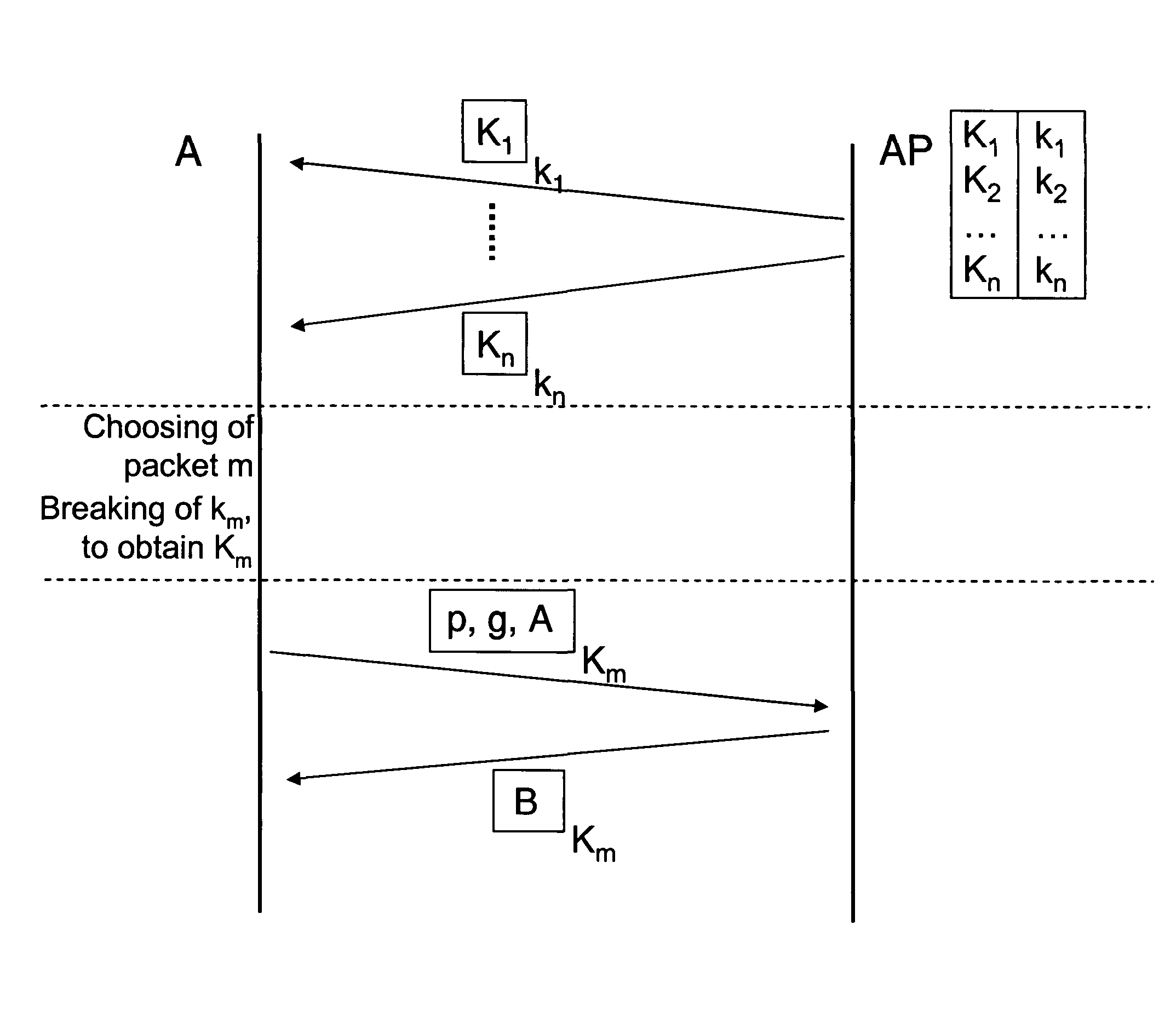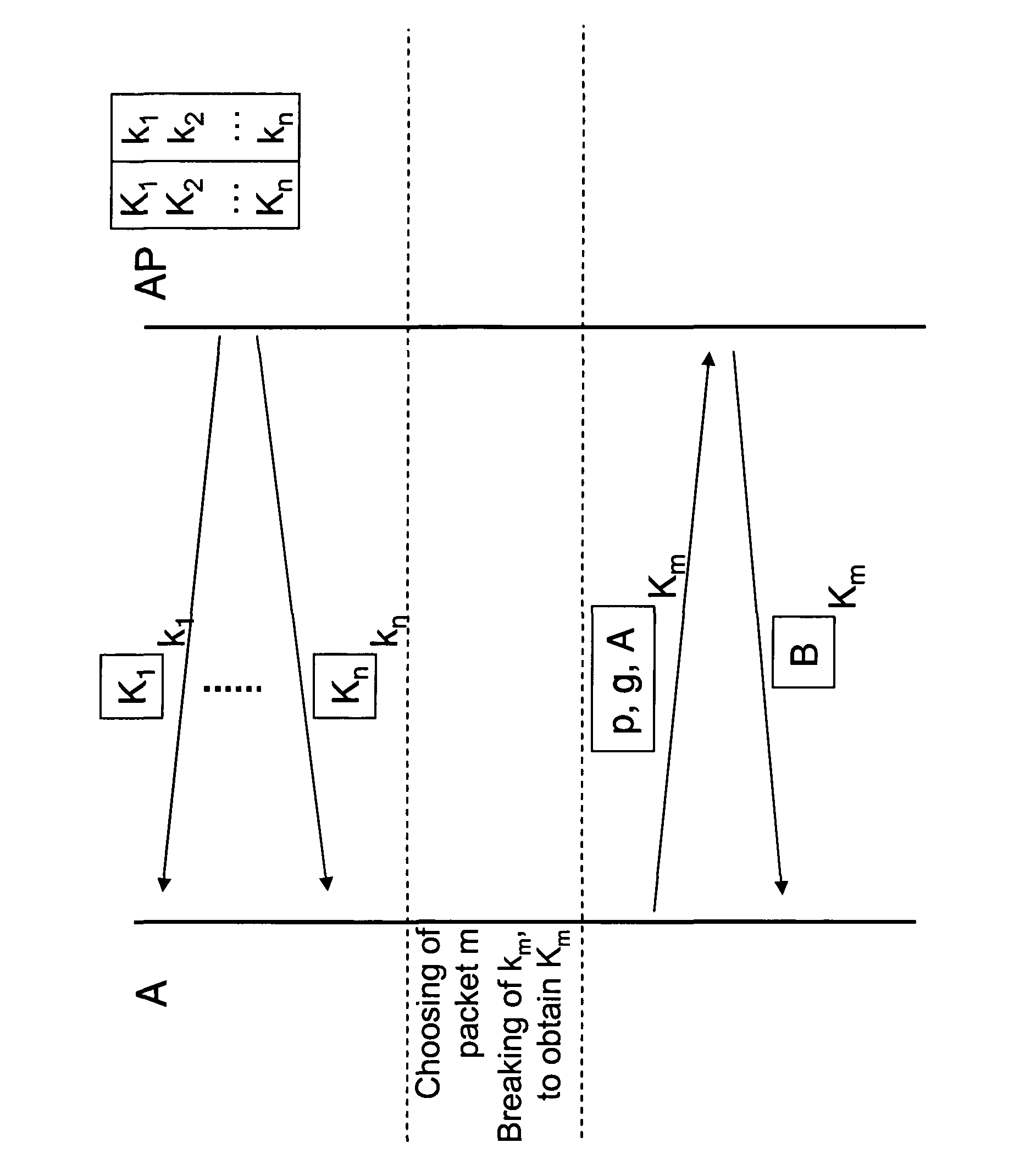Method for establishing a secret key between two nodes in a communication network
a communication network and secret key technology, applied in the field of secret key establishment between two nodes in a communication network, can solve the problems of gaining information itself, i.e. without that the attacker has to invest (considerable) further efforts, and is deemed useless, so as to avoid unnecessary data traffic and increase security
- Summary
- Abstract
- Description
- Claims
- Application Information
AI Technical Summary
Benefits of technology
Problems solved by technology
Method used
Image
Examples
Embodiment Construction
[0023]In a first step the access pint AP generates a multitude of packets Pi. The packets Pi contain each a first key Ki. The access point AP encrypts each of the packets Pi with a second key ki and sends the packets Pi encrypted in such a way over the wireless link, so the packets Pi can be received by the node A. In the concretely shown embodiment the packets Pi are encrypted with the block cipher RC5.
[0024]In a next step the node A chooses from the multitude of received packets Pi randomly a packet Pm. By running a brute force attack the node A breaks the encryption of the chosen packet Pm to thereby obtain the key Km. The brute force attack can be performed with reasonable efforts because the packets Pi have been encrypted by the access point AP with a relatively weak encryption.
[0025]In a third step the node A uses the found key Km to initiate a key exchange protocol with the access point AP. In the depicted embodiment, the key exchange protocol follows the known Diffie-Hellman...
PUM
 Login to View More
Login to View More Abstract
Description
Claims
Application Information
 Login to View More
Login to View More - R&D
- Intellectual Property
- Life Sciences
- Materials
- Tech Scout
- Unparalleled Data Quality
- Higher Quality Content
- 60% Fewer Hallucinations
Browse by: Latest US Patents, China's latest patents, Technical Efficacy Thesaurus, Application Domain, Technology Topic, Popular Technical Reports.
© 2025 PatSnap. All rights reserved.Legal|Privacy policy|Modern Slavery Act Transparency Statement|Sitemap|About US| Contact US: help@patsnap.com


